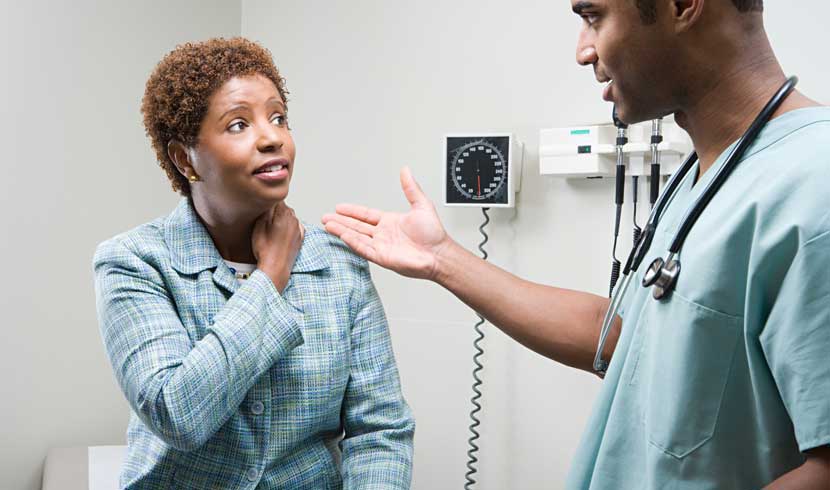Shoulder Injury – Dislocation and Separation

The Difference Between A Shoulder Dislocation and Shoulder Separation
The shoulder is one of the most mobile joints in the body, and as a result one of the most prone to injury. Two common traumatic injuries to the shoulder are: shoulder dislocation and shoulder separation. These phrases are sometimes used interchangeably, but they describe different conditions.
Shoulder dislocation refers to the upper part of the arm, or humerus, separating from the joint. Shoulder separation describes an injury affecting the ligaments located between the collarbone and shoulder blade, or acromion. These ligaments can be stretched in mild cases or torn with more severe trauma.
Both shoulder dislocation and separation are usually caused by sudden force or trauma and do generally require immediate medical attention. Contact sports, car accidents or falls on an outstretched arm are all common causes for these types of shoulder injuries.
What Kind Of Symptoms Can You Expect?
Similar symptoms are experienced with both a dislocated shoulder separation. Severe pain, visible inflammation and restricted movement are all quite common. Depending on the severity of the injury, the shoulder can appear out-of-place, with a loss of the rounded contour shaped by the deltoid muscle.
The arm may also be difficult to move, or seem positioned away from the body. Numbness and muscular weakness can accompany shoulder dislocation/separation, with pain radiating to nearby structures. Muscle spasms can also occur. If the upper arm bone, or humerus, has separated completely from its fibrocartilaginous socket known as the glenoid labrum, a hard knob can be felt under the skin.
Treatment
Shoulder dislocation/separation type injuries can be very painful and are best treated initially in an emergency room. Shoulder injuries are usually treated by orthopedic surgeons, doctors who specialize in the management of conditions involving the musculoskeletal system.
An orthopedist will perform a thorough physical examination of your shoulder, usually comparing his or her findings of your injured shoulder to those of your uninjured shoulder. This is done to access how your injured shoulder compares to your shoulder that was not injured.
Your doctor will evaluate the injured shoulder for tenderness, reduced range of motion as well as visible deformity. Your doctor may also order an X-ray to access the positioning and integrity of the bones that make up your shoulder. This is done to evaluate whether any shoulder bones are fractured, dislocated or separated.
If there are questions or concerns that cannot be resolved with x-ray, your doctor may order Magnetic Resonance Imaging or MRI. MRI imaging allows a doctor to view soft tissue structures that cannot be viewed directly with an x-ray. This type of testing will allow your doctor to rule out soft tissue injuries like rotator cuff tears, which are often associated with shoulder dislocation or separation.
Conservative treatment
Once a diagnosis of shoulder dislocation/separation is confirmed, your doctor will consider treatment alternatives. Treatment options can be conservative or surgical, depending on the severity of the injury.
Conservative treatment varies depending on the injury. With a dislocation, your doctor will perform a closed reduction procedure which involves manipulating the humerus or arm bone, back into proper position. This procedure can be painful and a patient will usually benefit from some form of anesthesia. A shoulder separation generally requires only immobilization to heal, with less severe cases.
Pain medication, including muscle relaxants and sedatives, will usually be prescribed to minimize pain and inflammation after the injury. Application of heat and cold can also help reduce painful swelling. Physical rest, with the arm immobilized in a sling, is generally advised and contributes to faster healing.
Surgery
Surgical intervention is recommended in more severe cases. Surgery can be required to repair torn ligaments, repair damaged fibrous tissue around the shoulder joint or to restore the humerus to its correct anatomical position. Although reconstruction of ligaments is a complex procedure, it can greatly improve the mobility of the shoulder. This type of surgery can be performed as an open procedure, or arthroscopically.
Following surgery, your doctor may order the use of a Continuous Passive Motion machine or CPM. This device gently and passively increases the range of motion of the shoulder joint, thereby promoting healing and strength. Use of an ice pack, worn on the shoulder will also usually be prescribed. This device will help reduce swelling and pain typically associated with this type of surgery.

